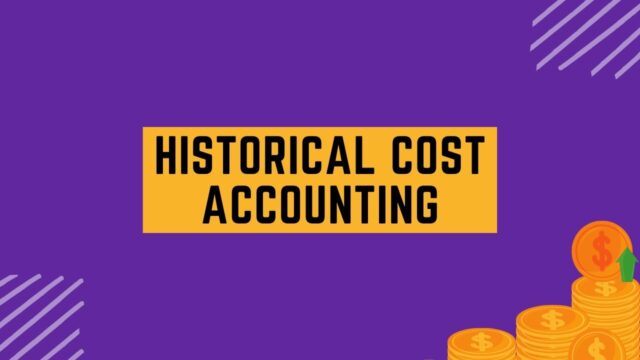
What Is Historical Cost Accounting?
Historical cost accounting is a method of accounting that reports an asset or liability at its historical cost, instead of its current value. Historical cost accounting is a common method for businesses and organizations to use, since it enables them to measure and analyze their finances without constantly adjusting their values. This type of accounting has numerous advantages, including its simplicity. Unlike the traditional cost accounting system, historical cost accounting can be used to accurately determine the costs of a variety of economic items, including stocks, bonds, and real estate.
Inflation-adjusted cost
Inflation adjusts historical cost as follows: if a book value is $10MM in 1965 and now it’s worth $600MM, multiply it by inflation-adjusted CPI, and you get the current value. For this calculation, the book value is not a single transaction but a series of transactions, some going back decades or centuries. Each prior transaction is at a different CPI level, so it makes no sense to use the original cost of the asset.
Fair market value
If you are evaluating an asset, whether it is for personal or business use, you should record its historical cost. While you can easily verify this by using source purchase or trade documents, you should understand that this value does not necessarily reflect the fair market value of the asset. Over time, the fair market value will diverge from the historical cost. For example, if you purchased an office building for $10 million 20 years ago, the market value of that asset will be at least three times higher than that historical cost.
While fair market value accounting is a worthy concept, some companies are resistant to this method because of the cost and difficulty in establishing standard measurements. For example, companies may fear that they will be forced to pay higher taxes or face higher property taxes if their costs are reported using fair market values. Further, companies may be reluctant to disclose their true costs, because it means revealing their assets to the public. This may result in an inaccurate valuation and a lack of transparency.
Acquisition cost
The term “acquisition cost of historical cost” is an accounting concept that refers to the value of financial items as they existed at the time of acquisition. This concept is used to determine the allowable cost of financial items. As such, historical cost is the most common method of financial reporting. Another accounting concept, known as current value accounting, uses a realistic value for financial items. The historical cost principle is more commonly used to value the assets of a company.
The term “acquisition costs” refers to the costs associated with acquiring fixed assets, including any sales tax that may have been payable, and other fees incurred when taking over a competing firm. In other words, this cost is the true cost of the fixed assets acquired by the company. This cost also includes costs associated with discounts and additional costs that were incurred as part of the acquisition process. In some cases, this cost is also known as the “original book value.”
Machine depreciation
A company uses historical cost of machine depreciation to determine the value of a piece of equipment. Suppose a machine costing $1430 is depreciated on a straight line basis over ten years. This method assigns the asset a historical cost of $10,000. The replacement cost or fair value are not considered when calculating the historical cost. Certain types of assets do not use the Historical Cost Convention.
In general, an asset’s useful life is the length of time that it will be used. The expected residual value is the value it will have at the end of its useful life. While the life expectancy and residual value are estimates, the method of depreciation is a mechanically-derived pattern that allocates the cost of an asset to expense over the number of years the asset will be used. This is a highly accurate representation of the depreciation rate.
Long-term asset depreciation
The Historical Cost of Long-Term Assets is an accounting method that tracks the cost of a company’s assets over time. It is often calculated as the cost of a company’s assets at the time of purchase, including the purchase price as well as any additional expenses. While this approach can be helpful during volatile market conditions, many financial experts say that historical cost is too conservative because it does not adjust for inflation or stable markets. In other words, a company may have paid $375,000 for a property that is worth $375,000 today.
Whether or not a company needs to account for this change in value is largely a matter of a business’s decision-making processes. In practice, historical costs of assets are used as the carrying value on its balance sheet. This accounting principle can help businesses keep track of the depreciation and increase in value of their assets over time. In some cases, historical costs may be adjusted to reflect the changes in value, such as if an asset is impaired.
Tax implications
The tax implications of historical cost are largely the same as the other two. This principle requires businesses to record all of their purchases at the cash price they paid when the assets were purchased, regardless of whether or not they depreciate over time. However, unlike the cost principle, which only applies to depreciating assets, historical cost accounts for additional expenses. In this article, we’ll explain how this principle affects the tax implications of your financial statements.
While historical cost has its uses, one of the biggest drawbacks is that it is a very conservative measure. However, this principle helps avoid overstating assets, especially when the market is volatile. For example, if a company purchased a building in 1925, it may now be worth $375,000, but the original purchase price was $100,000. Because the market has shifted over the years, the building may have undergone a significant amount of growth.


































